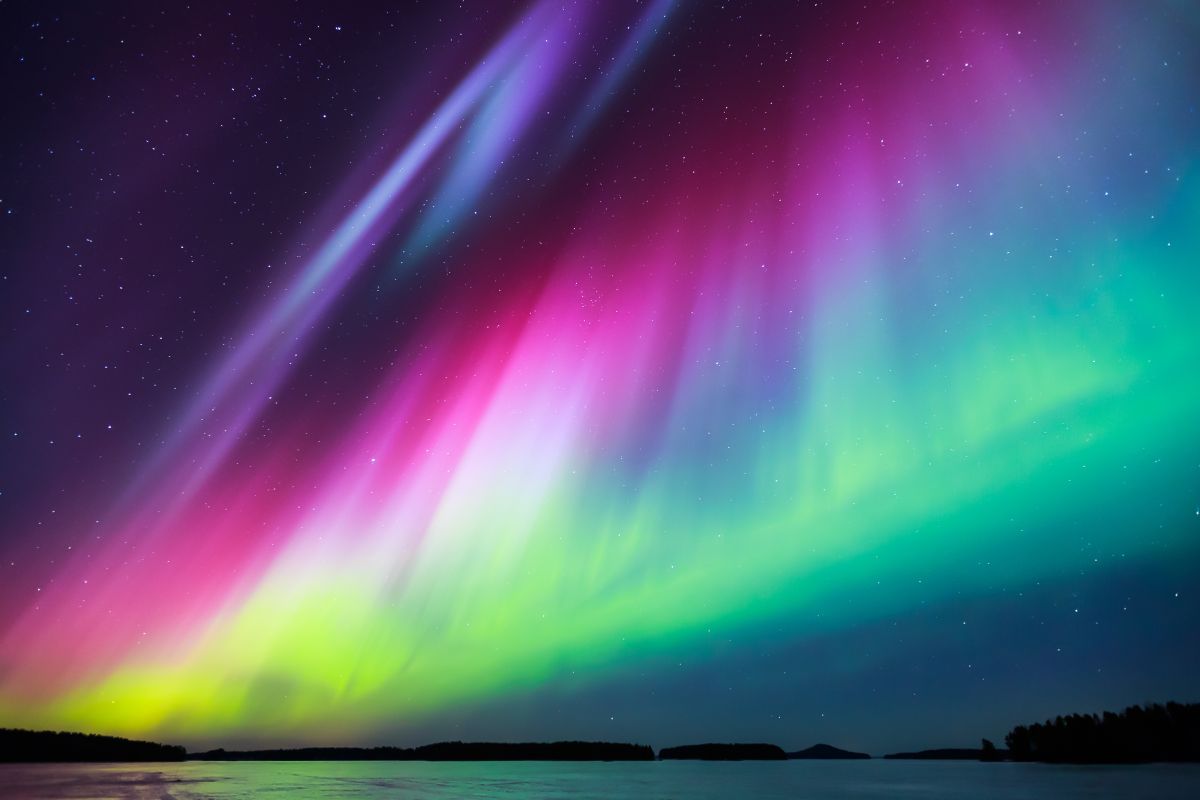
Aurora Borealis? At this time of year, at this time of day, in this part of the country, localized entirely within your kitchen!?
Have you ever seen the aurora borealis, or the "northern lights"? Perhaps you are more familiar with the southern lights, known as the aurora australis. If you're like me, living in the midwest doesn't bring you many opportunities to see these strange electromagnetic lightshows. However, the sun might be about ready to change that.
Our sun is currently approaching its solar maximum, a period where electro-magnetic activity is at its peak. This is expected to happen within the next year, during the current solar cycle 25. Solar cycles are determined by the amount of sunspots on the surface of the sun over time. As we approach solar maximum, the number of sunspots will continue to increase, creating more chances for solar flares and Coronal Mass Ejections, or CMEs, to be launched from the sun - and potentially towards our planet.
These electromagnetic storms pose risks for satellite communications, radio, and our power infrastructure, but they also make some stunning visuals in the night-time sky, depending on the severity of the storm.
How do scientists study solar activity?
One way scientists study solar activity is by observing sunspots. Sunspots are concentrations on the sun that pop up where the magnetic field is stronger than other areas of the sun (and about 2,500 times stronger than Earth’s magnetic field). Sunspots are formed where opposing magnetic fields become entangled. The battle between magnetic forces can cause solar flares and CMEs to get launched into space.
Solar flares are characterized as a bright flash of electromagnetic radiation that travels at the speed of light. Solar flares have the potential to wreak havoc on high-frequency radio signals in the ionosphere. Such incidences can cause a degradation of signal quality due to the collisions between electrons in the atmosphere.
CMEs, on the other hand, are plasma ejections with magnetically-charged particles that can take a bit longer to arrive, but can sometimes arrive in under 24 hours. CMEs are often associated with an initial solar flare.
These projectiles from the sun can cause geomagnetic storms, creating beautiful light shows on Earth. You can generally expect that severe geomagnetic storms will cause the auroras to be visible closer to the equator than normal.
Space Weather Forecasts
This past May, a G5 storm composed of several M-class solar flares and multiple CMEs hit Earth, causing auroras to be visible at lower latitudes, including right here in WFIU's backyard of Bloomington, Indiana!
You can keep updated about space weather by visiting the Space Weather Prediction Center for storm warnings as they happen.
Space weather can be beautiful, but next week on the blog, we’ll take a look at when it gets dangerous.
If you enjoyed this blog and want to learn more, be sure to check out some of our episodes about space weather and other cosmic topics:
Learn even more!
- Will the sun’s magnetic field flip this year? (and how the sun actually works)









